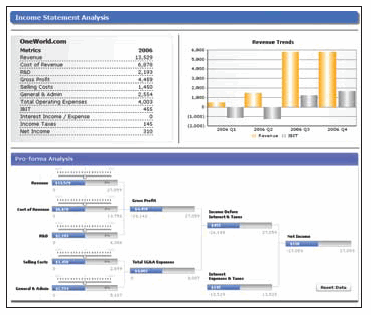LESSON - Developing BI Applications in a Heterogeneous Data Environment
By Bala Chandran, Senior Product Manager, MicroStrategy
Most organizations initially built business intelligence (BI) applications as small departmental solutions targeting specific business processes. Applications such as product sales reporting and HR compensation reporting were used by a limited number of power users to access a single, well-defined data source. Organizations now realize the transformative power of BI and seek to establish a single, enterprisewide reporting and analytics architecture that enables all users to make better-informed business decisions.
As architects continue to design these enterprise BI applications, they find that critical corporate information is stored in hundreds of different databases, flat files, cubes, and other data stores. In order to make effective, timely decisions, users need access to data from these multiple sources to provide an integrated view of business performance. It is important that users can view high-level dashboards, drill to detailed data, and receive proactive alerts—all without worrying about the source of the data. Organizations should look closely at how BI platforms can support heterogeneous data source environments before making their technology selections.
Enterprise Data Warehouses vs. Federated Data Stores
Creating a single enterprise data warehouse (EDW) has traditionally been the optimal solution to consolidating enterprise information. However, organizations have found that new data sources appear in the IT landscape faster than can be incorporated into the EDW. In contrast, some organizations have opted for a distributed architecture with information stored in several data marts and joined at the query level, often referred to as federated data. While both approaches have pros and cons, in either case BI software must effectively access multiple data sources to satisfy increasingly complex user requirements.

Figure 1: Dashboards often require access to as many as 10 different data sources in orderto present a holistic business performance perspective.
Dashboards
A true enterprise BI platform would be incomplete without the ability to access and query multiple information sources and present the information through a single standard interface. The user should be able to navigate across all five styles of BI—scorecards and dashboards, enterprise reports, OLAP analytics, predictive analytics, and alerting—irrespective of the data source. Then, business users can concentrate on solving business problems, rather than understanding data sources.
Dashboards, in particular, are an ideal way to monitor corporate performance across a heterogeneous data environment. The highly interactive and visual nature of dashboards, such as MicroStrategy’s Dynamic Enterprise Dashboards™, appeals to businesspeople who can use them to identify problem areas quickly and drill for further information. From a development standpoint, dashboards often require access to as many as 10 different data sources in order to present a holistic business performance perspective.
Dashboards must be interactive and highly visual to help users understand business performance. Dashboards that access multiple data sources typically fall into two categories. In the first case, a single dashboard can present data from many sources without joining data across those disparate sources. Overall enterprise KPIs can be monitored using this type of dashboard. In the second case, a single dashboard must join the data across heterogeneous data sources to perform the required analysis. For example, actual sales and forecast sales may be in two different systems. In this case, the BI layer must join the data across from the appropriate data sources. Of course, to perform joins between multiple data sources, common keys need to exist between heterogeneous data sources.
Summary
As dashboard-based performance management solutions become more prevalent throughout the enterprise, architects and developers should consider how they could integrate data from multiple sources into BI applications. BI platforms, like MicroStrategy, provide a compelling solution to integrate disparate data sources through highly interactive, dynamic dashboards.